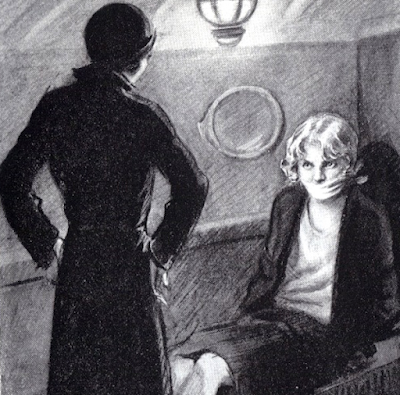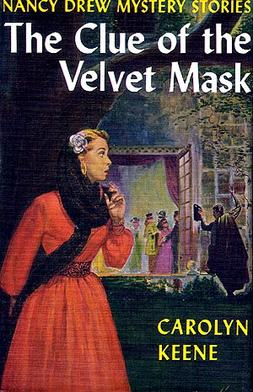Thanks to Joseph D'Agnese's Reading in Bars blogpost (HERE), I read Zilpha Keattey Snyder's The Egypt Game, and really enjoyed it. I think Snyder captured childhood obsession and fantasy perfectly. You do the damnedest things in childhood, from time-travel to being horses, from reading every single novel by an author and memorizing every freaking character and plot twist (Tolkein, Laura Ingalls Wilder, Andre Norton, Heinlein, T. H. White, Ray Bradbury, Carolyn Keene, Sherlock Holmes, etc.) to knowing you are going to die if you don't get to watch the latest episode of [fill in the blank here].
And children know that adults have absolutely no understanding or comprehension of who you are, what you want, or what you're going through, and never will. Deep down, every child completely disbelieves that adults were ever children. They are an alien species, set down among us to tell us what to do and train us for some future role. This is, I think, part of the attraction we had for Stranger in a Strange Land, aside from the sex (which for the 60s was pretty damn racy). The Old Ones raising the Nymphs to become something else made perfect sense.
But I disagree about the darkness of The Egypt Game. Yes, a child is murdered. And a second one, later on. I know, I know, if that isn't dark, what is? Well, so is child molestation, and in my childhood neighborhood we had a guy across the street who was molesting his foster kids, and our college-age next door neighbor tried to molest me when I was six. That's dark - too dark for most children’s book writers to think about touching, and probably rightly so.
Anyway, despite the murders, there's a distance kept throughout the novel which makes sense: children really can ignore almost everything if they're obsessed with something else. And 99% of the adults of The Egypt Game are harmless. Most of the time, the children spook themselves, which is also normal.
MY NOTE: In The Headless Horseman, my Laskin character, Linda Thompson, reminisces about how she talked herself into an obsession with a man – who does look pretty odd – that makes her absolutely terrified of him. Meanwhile, in case you haven't guessed, there were worse characters roaming Laskin at the time.
Anyway, as I thought about it, I realized that children's literature has actually gotten tamer in many ways. Try Nancy Drew - the books we were reading in the 1960s were still, mostly, the editions of earlier years. And thinking back on those books, what I remember is how in almost every story, Nancy was knocked out, kidnapped, bound, gagged, and taunted at least once, if not more than once.
 |
| Image courtesy of The Paris Review |
And sometimes it was Nancy and her chums. Repeatedly. In The Clue of the Velvet Mask, George Fayne, one of Nancy's best friends, was not just chloroformed and kidnapped, but shot up with mind-altering drugs, and - when she's finally rescued - is terrified that they are all going to be killed. Now this is important because George is, throughout the series, just as brave as Nancy, and even more of a daredevil. So for her to be frightened? So frightened that she's screaming at Nancy to give up the investigation? Scary. Also, the villain nearly smothers Nancy to death in that one. In fact, the ruthless, dangerous criminals who Nancy's up against repeatedly drug and physically assault Nancy and her friends. (Wikipedia) Very dark.
MY NOTE: The Clue of the Velvet Mask was the last ghostwritten Nancy Drew by Mildred Benson, who has been credited as Nancy's original creator, and apparently the darkest one she ever wrote. If you want to see how dark it can get, you need to find the original - the 1953 edition - currently out of print.
SECOND NOTE: We all knew, BTW, that George was gay, even back in the 1960s, but then we were California girls, and learned stuff early. Didn't bother us a lick. When we role-played Nancy Drew novels, none of us minded being George if we couldn't be Nancy - what we hated was being assigned to play Bess Marvin, George's cousin and Nancy's other best friend, who was always depicted as plump, hungry, and scared of her own shadow.
Yes, children's literature has been tamed. Think about Charles Dickens' Oliver Twist. An orphan is almost starved to death in an orphanage, escapes, and is taken in by a young gang of pickpockets and thieves under the tutelage of a career criminal. Among the companions are a young prostitute who is regularly beaten and eventually bludgeoned to death by her brutal criminal lover. Etc. How the hell did this ever get read aloud as a post-supper treat? And yet it was.
Going back even further in time, there's Martha Sherwood's The History of the Fairchild Family, published in 1818 and remaining in print for over a hundred years, and part of every good Victorian child's library. Fiercely Calvinist, it's all about the Fairchild parents trying against all odds to save the souls of their little unregenerate children Emily, Lucy, and Henry. Horrific things happen - Augusta Noble, saucy, pert, and disobedient, plays with candles and burns herself to death, which immediately leads to everyone declaring the obvious truth that she is now burning in hell as well. And, when Emily, Lucy, and Henry fight amongst themselves one day, their father first whips them, then takes them out to see a gibbet, where a rotting corpse is hanging, its chains rattling in the wind, and makes them kneel in the dust and pray underneath it. Now that's nightmares.
BTW, if you want to read The Fairchild Family in all its horrors, you can read the 1819 text HERE - especially "The Story on the Sixth Commandment." It explains the early Victorian mindset better than any modern analysis can ever do.
And, finally, Grimm's Fairy Tales. I remember The Robber Bridegroom very well, because for some reason I was fascinated by the fact that the robbers gave the poor victim three glasses of wine: one white, one red, and one yellow. Anyway, the miller's daughter goes to see her betrothed in the forest, not knowing he's a robber. At the house both a bird in a cage and an old woman tells her that the people there will kill her and eat her. The old woman hides her behind a cask, and the robber & his gang arrive with a woman whom they proceed to get drunk, and then kill her and chop her up. Luckily the ring finger flies off and lands in the miller's daughter's lap, and she shows it at the pre-wedding banquet. The bad guys are executed, so all is well. Huzzah!
Maybe that's the hallmark of true children's literature - in the end all the bad people are caught, executed, die, are destroyed? And then you grow up, and you find out that the bad guys aren't always caught, executed, die, or destroyed. That's when your heart breaks, and the real nightmares begin.
"Fairy tales do not give the child his first idea of bogey. What fairy tales give the child is his first clear idea of the possible defeat of bogey. The baby has known the dragon intimately ever since he had an imagination. What the fairy tale provides for him is a St. George to kill the dragon."~ G.K. Chesterton, writing the original lines, in Tremendous Trifles, Book XVII: The Red Angel (1909)


A provocative post. Surprising how much of our literature is in fact grounded in the old fairy tales and children's stories.
ReplyDeleteI know. They haunt us, don't they?
ReplyDeleteA great deal of literature aimed at kids right now is very dark. You must not have read very much literature aimed at 8 to 12 year old kids lately if you think it's tame. Go read the opening page of "The War that Saved My Life." From that opening scene, it only gets worse for the first few chapters- horrible verbal and physical abuse of a child and neglect resulting in permanent crippling of the main character. If that's not dark I don't know what is. Or check out The Long Way Down which is targeted to middle school kids. Or The Stars Beneath Our Feet. The bad guys aren't always killed, captured, or punished in kids books any more which makes them even darker to me.
ReplyDeleteEve, I was absolutely convinced of a conspiracy that children never grew up, that adults were always adults in a static world. And it’s true; I may have grown bigger, but I can’t claim I’ve grown up.
ReplyDeleteOur parents warned us not to be alone (and later, not to work for) the local drive-in theatre owner. Boys weren't safe. While parents weren’t explicit in their instruction, we figured out the risk.
A painting of St. George killing an unusually snaky dragon hung in a bedroom in my grandmother’s house. I felt sorry for the dragon. Still do.
https://th.bing.com/th/id/OIP.MYfr1y2_arORNYrfM1MqTQHaLu
Anonymous, I know there is some pretty dark literature for kids out there - but as I said, so is Dickens. Look at Smike in Nicholas Nickleby, verbally and physically abused, almost starved to death at the Squeers' school; Jo the crossing sweeper, all on his own at a very young age, and is betrayed to his enemies by Harold Skimpole (a parasitic mooch), who simply doesn't want to catch what Jo has - and Jo dies. And many more. A lot of children die in Dickens, and at least some of the bad guys (like Harold Skimpole) live on.
ReplyDeleteLeigh, that's a wild painting - I feel sorry for the dragon, too. I'm glad to know I wasn't the only one who thought that adults were another species!
Thanks for this. Really enjoyed it. I wonder if we can make the argument that the children in many of these books are almost always better behaved than the adults, who are the ones who behave like brats. Oh well, maybe not. Roald Dahl gave us kids who behave like brats in "Charlie and the Chocolate Factory."
ReplyDelete